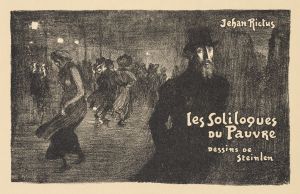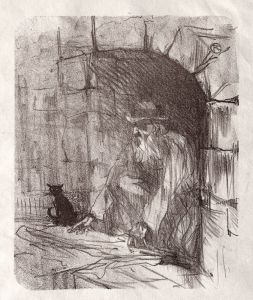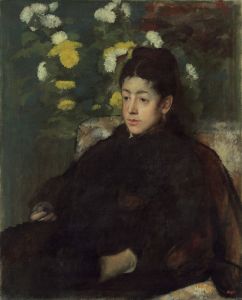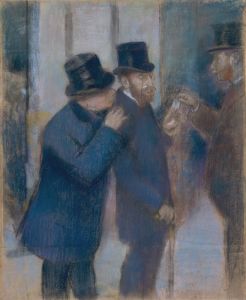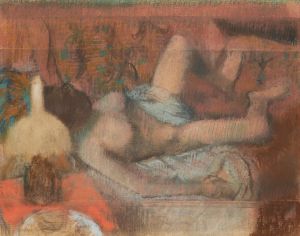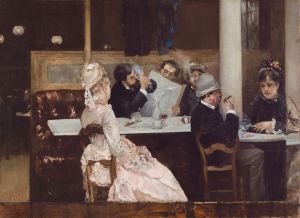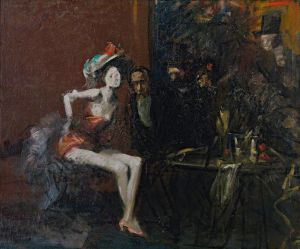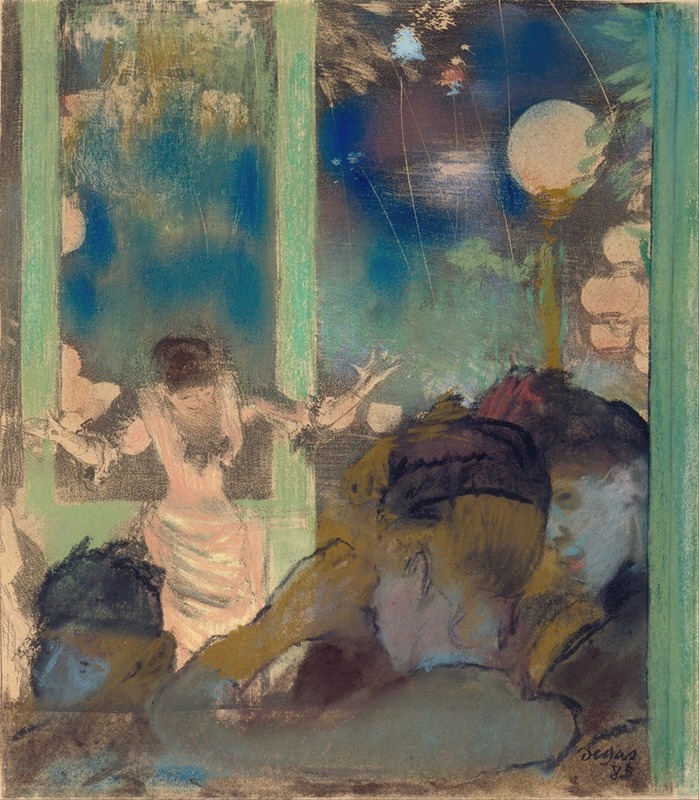
Mademoiselle Bécat at the Café des Ambassadeurs
A hand-painted replica of Edgar Degas’s masterpiece Mademoiselle Bécat at the Café des Ambassadeurs, meticulously crafted by professional artists to capture the true essence of the original. Each piece is created with museum-quality canvas and rare mineral pigments, carefully painted by experienced artists with delicate brushstrokes and rich, layered colors to perfectly recreate the texture of the original artwork. Unlike machine-printed reproductions, this hand-painted version brings the painting to life, infused with the artist’s emotions and skill in every stroke. Whether for personal collection or home decoration, it instantly elevates the artistic atmosphere of any space.
Edgar Degas, a prominent French artist associated with the Impressionist movement, created the pastel drawing Mademoiselle Bécat at the Café des Ambassadeurs in the late 19th century. This work exemplifies Degas's interest in capturing scenes of modern Parisian life, particularly those involving entertainment and leisure. The piece portrays a female performer, Mademoiselle Bécat, at the Café des Ambassadeurs, a popular café-concert venue in Paris during the Belle Époque.
The Café des Ambassadeurs was renowned for its lively atmosphere and performances, attracting a diverse audience from various social classes. Degas frequently explored such venues in his art, documenting the vibrant cultural life of the city. In this pastel, he focuses on the figure of Mademoiselle Bécat, a singer or performer, capturing her in the midst of her act. The composition highlights Degas's skill in rendering human expression and movement, as well as his mastery of pastel as a medium.
Degas's use of pastels in this work demonstrates his ability to create rich textures and vivid colors, which bring the scene to life. The artist was known for his innovative techniques with pastels, often layering and blending the medium to achieve a sense of depth and luminosity. The work also reflects Degas's interest in the interplay of light and shadow, a hallmark of his style.
While the exact date of the piece is not definitively documented, it is consistent with Degas's broader body of work from the 1870s to the 1880s, a period when he frequently depicted performers, dancers, and other figures from Parisian nightlife. The subject matter aligns with his fascination with the ephemeral and dynamic aspects of modern urban life.
Mademoiselle Bécat at the Café des Ambassadeurs is part of Degas's extensive exploration of entertainment culture, which includes depictions of ballet dancers, opera singers, and café-concert performers. These works collectively offer a glimpse into the social and cultural fabric of Paris during the late 19th century. The piece is celebrated for its immediacy and intimacy, qualities that are characteristic of Degas's approach to capturing the human experience.
As with many of Degas's works, the exact circumstances surrounding the creation of this piece, including its commission or exhibition history, remain unclear. However, it remains an important example of his ability to document the vibrancy of Parisian life through his unique artistic vision.






